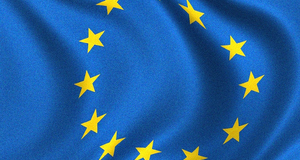The increased focus on the importance of human rights over the course of the latter half of the 20th century in Europe has been influenced by centuries of legal evolutionary discourse. Cultural and traditional differences have also played an essential part in the formation of the legal culture that defines human rights. Conflicts and wars have also both directly and indirectly influenced legal systems.
As power dynamics change, legal systems adapt to a certain extent to accommodate social mores. For example, many legal systems are often criticized for being "behind" technologically, specifically in cyber law. Recent progress in this field is evident with the creation of the Budapest Convention, ratified in 2004 to regulate cybercrime, a concern that had not been as directly addressed to date. This dynamic has been a trend in law dating back as far as Roman civil law and English common law. Some posit that the openness of law has changed in that it became more open to revision after the French Revolution (1789), and more inclusive of a myriad of cultures and ideologies.
Additionally, the influences from other legal cultures have played essential roles in shaping the current European legal system. Jean-Jacques Rousseau and the Baron de Montesquieu contributed to the Napoleonic Code, which in itself became one of the most influential legal doctrines. Many legal institutions are based on the Code, and have implemented elements of it into their own respective legal codes. It has been influential and incorporated into the legal systems of many European countries and some South American countries.
The ideologies reflected by the Code promote the protection of individuals, as opposed to primarily focusing on states' rights. The shift toward protecting the individual manifested itself after the Second World War, predominately in Western Europe and with the adoption of the Universal Declaration of Human Rights. In addition to the creation of the Convention of Human Rights in 1953, Europe continued to shift in the direction of defending and protecting individual rights.
Unfortunately, the enthusiasm for human rights protection expressed by Western Europe was not matched by Eastern Europe. This was made evident by Eastern Europe's response to Western European's foundation of NATO (North Atlantic Treaty Organization) in 1949 with the Warsaw Pact in 1951. Eastern Europe remained focused on the "collective good" as opposed to the protection of the individual. This ideology remained the norm arguably until the end of the Cold War in 1989.
The significance of the contrasting approaches taken by Western and Eastern Europe was critical to the legal systems that resulted. As discussed, the European Court of Justice (established in 1953) holds the most similar position to the European Court of Human Rights with regard to its protection of rights. To understand the ways the courts function, it is essential to identify their individual histories.
The Treaty of Paris (1951) established the European Coal and Steel Community, which would later become the European Union. Under the auspices of the European Coal and Steel Community, the European Court of Justice was formed upon the premise that each member state would maintain its own supreme court. The original court allotted one judge per state with the addition of one member to ensure a decision without a tie, for a total of seven judges. The original signatory states to the European Coal and Steel Community Act in 1957 ratified the Treaty of Rome, which also provided grounds for the creation of this unprecedented supranational system.
This was another critical step towards the establishment of the Western European focus on human rights. The Community formally became the European Union in 1992 with the ratification of the Treaty of Rome. Through the EU came many of the documents that created more bases and specific cases for the protection of human rights. For example, the membership of states to the European Union was contingent upon being party to the Convention on Human Rights.
Western states were concerned that the Eastern European states would not follow human rights standards as strictly as in the west. This concern was not limited to the European continent, but globally, in various countries in Africa, Asia, and the Middle Eastern. Ken Roth of Human Rights Watch profoundly stated:
The latest batch of new members [to the Commission on Human Rights] illustrates how poorly this system works. They include such dubious paragons of human rights virtue as Algeria, the Democratic Republic of Congo, Kenya, Libya, Saudi Arabia, Syria, and Vietnam. Needless to say, such governments do not seek membership out of a commitment to promote human rights abroad or to improve their own abysmal human rights record. Rather, they join the commission to protect themselves from criticism, and to [eventually] undermine its work.
The initial enforcement and (arguably) intent to uphold standards of human rights was insufficiently supported at the inception of the EU. Thus, the courts themselves are not necessarily blameworthy in their inability to ameliorate the status of human rights violations. Although the ICJ has the authority to impose fines upon member states that do not comply with its rulings, it is an insufficient incentive to motivate members to comply with its decisions.
It is necessary to have the combined force of willing states coupled with court rulings to allow for an effective legal basis in European countries. "The decision of the court has no binding force except between the parties and in respect to that particular case." Not only does this undermine the legitimacy of legal decisions but challenges the legal institutions themselves on several levels.
The European Court of Human Rights adopted a structure that endows it with the power to concentrate efforts to areas that are a priority in its jurisdiction. These adaptive methods include two main guiding principles representing the idealism of the European Convention on Human Rights, and are known as the Margin of Appreciation and Living Instrument doctrines. The Margin of Appreciation doctrine established the idea that domestic courts will still retain a great amount of power even if they fall under the jurisdiction of the European Court of Human Rights simply by being a member of the Council of Europe.
The countries that are under the European Court of Human Rights are not necessarily obligated to follow the decisions of the Court: it is dependent upon each state, and how much power they wish to delegate and hand over to the Court. This is extremely problematic, because it becomes difficult to determine with certainty which court will stand as the final authority on various issues. It is the decision of each domestic court to determine if the country's individual court system will take precedence over the European Court of Human Rights.
This problem has been justified to provide as a safeguard for the retention of domestic power, but is counterproductive to its intent. By not maintaining a consistent application of law, the court detracts from its legitimacy and undermines its own authority. Historically, when courts have legally binding decisions, this has resulted in significant societal impact (not necessarily immediate, but over time). The "domestic effect of the Convention depends on whether a state employs a monistic or dualistic approach to international law." This is based through the safeguard of Article 46 of the Convention on Human Rights:
- The High Contracting Parties undertake to abide by the final judgment of the Court in any case to which they are parties.
- The final judgment of the Court shall be transmitted to the Committee of Ministers, which shall supervise its execution.
- If the Committee of ministers considers that the supervision of the execution of a final judgment is hindered by a problem of interpretation of the judgment, it may refer the matter to the Court for a ruling on the question of interpretation. A referral decision shall require a majority vote of two thirds of the representatives entitled to sit on the committee.
- If the Committee of Ministers considers that a High Contracting Party refuses to abide by a final judgment in a case to which it is a party, it may, after serving formal notice on that Party and by decisions adopted by a majority vote of two thirds of the representatives entitled to sit on that committee, refer to the Court the question whether that Party has failed to fulfill its obligation under paragraph 1.
- If the Court finds a violation of paragraph 1, it shall refer the case to the Committee of Ministers for consideration of the measures to be taken. If the Court finds no violation of paragraph 1, it shall refer the case to the Committee of Ministers, which shall close its examination of the case."
There are some advantages to the Margin of Appreciation doctrine, for example, it allows the court sufficient authority without infringing upon domestic courts' power. " 'It is in no way the Court's task to take the place of the competent national court but…to review…the decision…in the exercise of their power of appreciation.' " If other supranational courts such as the European Court of Justice employed this distinction of division of power, they would be able to achieve a balance between themselves and domestic courts.
Consequently, neither would feel that its authority had been undermined, and would maintain a more effective legal authority in resolving cases. The Living Instrument doctrine provides for the concern that law will not change as society evolves, thereby maintaining the relevance of laws over time. This doctrine allows human rights protection to grow and evolve with changes in European society, without compromising the integrity of the laws.
The Council of Europe plays "the irreplaceable role as the leading human rights organization in Europe" and was founded upon "…[the] three pillars [of] the enjoyment of human rights and fundamental freedoms by all persons within the jurisdiction of its member states, the consolidation of the rule of law, and the existence of a genuinely pluralistic democracy, based on the …moral values which are the common European heritage."
Recently, cooperation of the European Union with the Convention on Human Rights (ECHR) has been proposed through the Lisbon Treaty. Furthermore, Protocol 14 of the ECHR makes the members of the EU and European Court of Human Rights subject to the Convention on Human Rights, and any subsequent human rights law under the jurisdiction of the Council.
Currently there are concerns with consistent application of the law under the European Court of Human Rights and the European Court of Justice. The alliance of the Council and the EU would help to alleviate the concern, but there would still remain a tenuous relationship between the two courts.Continued on Next Page »
Amnesty International- Public Statement: Russian Federation and European Court of Human Rights Rulings on Bitiyeva and X v. Russia. June 21, 2007 (http://asiapacific.amnesty.org/library/Index/ENGEUR460272007?open&of=ENG-RUS).
Application of the Convention on the Prevention and Punishment of the Crime of Genocide (Bosnia and Herzegovina v. Serbia and Montenegro). International Court of Justice, (http://www.icjcij.org/docket/index.php?sum=667&code=bhy&p1=3&p2=2 &case =91&k=f4&p3=5) accessed February 18, 2010.
Arold, Nina Louise. The Legal Culture of the European Court of Human Rights. Brill Academic Publishers Koninklikle, 2007.
Association des Conseils d'Etat et des Jurisdictions administratives suprêmes de l'Union européenne (http://www.juradmin.eu/en/history/history_en.html) accessed February 23, 2010.
Balkin, Jack M. "What Brown Teaches Us About Constitutional Law." Virginia Law Review, Vol. 90, No. 6 (October 2004):1542.
Bitiyeva and X v. Russia 2009, App. No. 57953/00, 37392/03. Accessed from the Chechen Republic Ichkebia (http://www.waynakh.com/eng/2009/05/bitiyeva-and-x-v-russia/).
Chivers, C.J. "Journalist Critical of the Chechen War is Shot Dead." New York Times, October 8, 2006.
Clapham, Andrew. Human Rights: A Very Short Introduction. Oxford University Press, Oxford, 2007.
Council of Europe, Convention on Cybercrime: Signatures and Ratifications- CETS No. 185. Entered into force July 1, 2004. (http://conventions.coe.int/Treaty/Commun/ChercheSig.asp?NT=185 &CM=&DF=&CL=ENG) accessed July 15, 2013.
Council of Europe: "The Council of Europe in Brief," n.d., (http://www.coe.int/aboutCoe/index.asp?page=datescles&l=en) accessed February 12, 2010.
Council of Europe, European Convention on Human Rights. Entered into force September 3, 1953.
Council of Europe Protocol No. 14 to the Convention for the Protection of Human Rights and Fundamental Freedoms, amending the control system of the Convention. Entered into force June 1, 2010.
Council of Europe Document: Report of the Monitoring Committee of March 14, 2000, Document 8666.
Council of Europe Press Notice of April 26, 2001. "Report of monitoring Committee of March 14 2000," Council of Europe.
Constitutional Dictionary (usconstitution.net) accessed Jan 31, 2010.
Damrosch, Lori. Law and Force in the New International Order. Oxford, Westview Press, 1991.
European Court of Human Rights Official Texts. (http://www.echr.coe.int/Pages/home. aspx?p=basictexts&c=#n1359128122487_pointer) accessed September 10, 2014.
Ezelin v. France (11800/85) 1991. Accessed on April 1, 2010 (http://cmiskp.echr.coe.int/tkp197/view.asp?action=html&documentId=695552& portal=hbkm&source=externalbydocnumber&table=F69A27FD8FB86142BF01C1166DEA398649).
Friedman, Lawrence M. "Is There a Modern Legal Culture?" Ratio Juris (1994).
Friedman, Lawrence M. "The Concept of Legal Culture: A Reply" in David Nelken's Comparing Legal Cultures: Aldershto, Dartmouth, 1997.
Funke v. France, App. No 10828/84. Decision Feb. 25. 1993. (http://cmiskp.echr.coe.int/tkp197/view.asp?action=html&documentId=695686&portal =hbkm&source=externalbydocnumber&table=F69A27FD8FB86142BF01C1166DEA398649).
The Hague, Press Release: "Serbia Found Guilty of Failure to Prevent and Punish Genocide." Sense Tribunal Online, February 26, 2007, (http://www.sense-agency.com/international_court_of_justice/serbia-found-guilty-of-failure-to-prevent-and-punish-genocide.47.html?cat_id=2&news_id=10129) accessed February 6, 2010.
Handyside v. UK. Application No. 5493/72 (1976) (http://hudoc.echr.coe.int/sites/eng/pages/ search.aspx?i=001-57499#{"itemid":["001-57499"]}) accessed on September 14, 2014.
Helfer, Lawrence and Anne-Marie Slaughter. "Toward a Theory of Effective Supranational Litigation." Yale Law Journal (1997) pg. 296.
International Criminal Court. "States Parties to the Rome Statute." The Hague, n.d. (http://www.icc-cpi.int/Menus/ASP/states+parties/) accessed on March 3, 2010.
International Court of Justice, Statute of the International Court of Justice (http://www.icj-cij.org/documents/?p1=4&p2=2) accessed August 28, 2014.
Keylor, William R. Twentieth Century World and Beyond: An International History Since 1900. Oxford University Press, Oxford, 5th edition, 2005.
Mahony, Paul. "Marvelous Richness of Diversity or Individual Cultural Relativism," Human Rights Law Journal (1998).
Merryman, John Henry. The Civil Law Tradition, An Introduction to the Legal Systems of Western Europe and Latin America. Stanford University Press, Stanford, 1985.
Military Tribunals at Nuremburg: Official Record, United States v. Karl Brandt, Siefgried Handlose, Paul Rostock, Oskar Schroeder, Karl Genzken, Kurt Blome, Rudolf Brandt, Joachim Mrugowsky, Helmut Popendick, Wolfram Sievers, Konrad Shaefer, Waldemar Hoven, Wilhem Beigleboeck, Fraitz Fischer, Adolf Pekorny, etc. Nuremberg, 1946. pg. 8-12.
Mirow, M.C. "The Power of Codification in Latin America: Simón Bolívar and the Code Napoléon" (http://heinonline.org/HOL/LandingPage?collection=journals&handle= hein.journals/t ulicl8&div=7&id=&page=) accessed March 14, 2010.
Mole, Nuala and Catharina Harby. "The Right to Fair Trial: A Guide to the implementation of Article 6 of the European Convention on Human Rights." Belgium: Council of Europe, 2006.
Nicaragua v. United States of America (1986) International Court of Justice decision (http://www.icj-cij.org/docket/index.php?sum=367&p1=3&p2=3&case=70&p3=5).
Nino, Carlos Santiago. The Ethics of Human Rights. Oxford University Press, Oxford, 1991.
Nold v. Commission, 4/73 [1974] ECR 491 (http://eur-lex.europa.eu/Lex UriServ/LexUriServ.do?uri=CELEX:61973CJ0004:EN:PDF) accessed March 3, 2010.
Posner, Eric A. "Is the International Court of Justice Biased?" University of Chicago Law School , John M. Olin Law & Economics Working Paper No. 234, 2nd Series, December 2004 (http://www.law.uchicago.edu/files/files/234.eap_.icj-bias.pdf) accessed September 12, 2014.
The Prosecutor v. Joseph Kony, Vincent Otti, Okat Odhiambo and Dominic Ongwen. Cour Pénale Internationale ICC-02/04-01/05 (http://www.icccpi.int/en_menus/icc/ situations% 20and%20cases/situations/situation%20icc%200204/related%20cases/icc %200204%200105/Pages/uganda.aspx) accessed September 3, 2014.
Rainey, Bernadette, Elizabeth Wicks, and Clare Orey. The European Convention on Human Rights. Oxford University Press, Oxford, 2014.
Reagan, Ronald. "Tear Down This Wall." Speech, Berlin, Germany, June 12, 1987.
Roberts, John (Chief Justice). Speech, University of Alabama Law School, March 9, 2010.
Roth, Ken. Human Rights Watch field report: April 2001.
Simons, Marlise. "Court in Hague Issues Arrest Warrants for Ugandan Rebels." New York Times, October 15, 2005.
"State of Human Rights and Democracy in Europe." Debate at the Assembly. December 2007. Council of Europe Publishing.
Steiner, Henry J. and Philip Alston. International Human Rights in Context, Law Politics, Moral. Oxford University Press, Oxford, 2nd edition, 2000.
"Strasbourg to Rule on Torture and Killing of Chechen Peace Activist." European Human Rights Advocacy Centre: London Metropolitan University, June 19, 2007 (http://www.londonmet.ac.uk/londonmet/library/h98248_3.pdf) accessed April 1, 2010.
Thompkins, Gwen. "Victims of African Violence Sing for Justice," National Public Radio: broadcasted November 28, 2009.
Treaty of the European Union (Maastricht Treaty), Effective February 7, 1992.
Treaty of Lisbon amending the Treaty on European Union and the Treaty establishing the European Community. Signed December 17, 2007.
Trombley, Stephen. Nuremberg. Film. Directed by Stephen Trombley. New York, NY: Filmakers Library, 1996.
United Nations General Assembly. Convention on the Prevention and Punishment of the crime of Genocide, Adopted by Resolution 260 (III) A on 9 December 1948. Available online (http://www.hrweb.org/legal/genocide.html).
United Nations General Assembly, Rome Statute of the International Criminal Court (last amended 2010) Article XII. (http://legal.un.org/icc/statute/99_corr/cstatute.htm) accessed August 1, 2014.
United Nations Office of the High Commissioner for Human Rights (Adopted 10 December 1984 entry into force June 26, 1987, in accordance with article 27(1). Convention Against Torture and Other Cruel, Inhuman, or Degrading Treatment or Punishment (http://www.ohchr.org/EN/ProfessionalInterest/Pages/CAT.aspx) accessed March 1, 2010.
United States Holocaust Memorial Museum, Washington, D.C. (http://www.ushmm.org/wlc/article.php?lang=en&ModuleId=10005143) accessed February 2, 2010.
Endnotes
1.) Council of Europe Site, "Council of Europe: In Brief." Accessed February 12, 2010 (http://www.coe.int/aboutCoe/index.asp?page=datescles&l=en). The founding countries of Council of Europe: Belgium, France, Luxembourg, the Netherlands, the United Kingdom, Ireland, Italy, Demark, Norway, and Sweden.
2.) Steiner, Henry J. and Philip Alston. International Human Rights in Context, Law Politics, Moral, (Oxford University Press, Oxford, 2nd edition, 2000), pp. 801, 807; Laurence Helfer and Anne-Marie Slaughter, 'Toward a Theory of Effective Supranational Litigation, 107, Yale Law Journal (1997) pg. 296.
3.) Arold, Nina Louise. The Legal Culture of the European Court of Human Rights: Brill Academic Publishers Koninklikle (2007), 14-15.
4.) Ibid, 2.
5.) Any individual who is a citizen of one of the current 47 member states of the Council of Europe may appeal to the European Court of Human Rights.
6.) Nuremberg (video): Stephen Tremblay, 2001.
7.) Military Tribunals at Nuremburg: Official Record, United States v. Karl Brandt, Siefgried Handlose, Paul Rostock, Oskar Schroeder, Karl Genzken, Kurt Blome, Rudolf Brandt, Joachim Mrugowsky, Helmut Popendick, Wolfram Sievers, Konrad Shaefer, Waldemar Hoven, Wilhem Beigleboeck, Fraitz Fischer, Adolf Pekorny, etc. Nuremberg, 1946. pg. 8-12.
8.) United States Holocaust Memorial Museum, accessed February 2, 2010 (http://www.ushmm.org/wlc/article.php?lang=en&ModuleId=10005143).
9.) Keylor, William R. Twentieth Century World and Beyond: An International History Since 1900, 5th Edition. Oxford University Press, Oxford (2005) pg. 177-178.
10.) International Criminal Court: States Parties to the Rome Statute. Accessed on March 3, 2010 (http://www.icc-cpi.int/Menus/ASP/states+parties/).
11.) Rome Statute of the International Criminal Court, Article XII accessed August 1, 2014 (http://legal.un.org/icc/statute/99_corr/cstatute.htm).
12.) Convention Against Torture and Other Cruel, Inhuman, or Degrading Treatment or Punishment, 1987.
13.) European Court of Human Rights Official Texts. Accessed September 10, 2014 (http://www.echr.coe.int/Pages/home.aspx?p=basictexts&c=#n1359128122487_pointer).
14.) Arold, 20.
15.) Ibid, 21.
16.) Nino, Carlos Santiago. The Ethics of Human Rights: Oxford University Press, Oxford (1991). Carlos Santiago Nino was a prominent legal scholar whose work represented progressive thought, especially with regard to morality.
17.) Constitutional Dictionary, ex post facto defined as: "1st. Every law that makes an action done before the passing of the law, and which was innocent when done, criminal; and punishes such action. 2d. Every law that aggravates a crime, or makes it greater than it was, when committed. 3d. Every law that changes the punishment, and inflicts a greater punishment, than the law annexed to the crime, when committed. 4th. Every law that alters the legal rules of evidence, and receives less, or different, testimony, than the law required at the time of the commission of the offense, in order to convict the offender."
From usconstitution.net (accessed Jan 31, 2010).
18.) Rome Statute of the International Criminal Court: Part 13, Article 124. Accessed on September 9, 2014 (http://www.icc-cpi.int/nr/rdonlyres/ea9aeff7-5752-4f84-be94-0a655eb30e16/0/rome_statute_english.pdf).
19.) Arold, 3.
20.) This is in no way implicit that legal systems change or should change in accordance with or at the whim of social pressures, but serves only as a comment on the inclusion of certain accommodations.
21.) Convention on Cybercrime: Signatures and Ratifications Accessed July 15, 2013 (http://conventions.coe.int/Treaty/Commun/ChercheSig.asp?NT=185&CM=&DF=&CL=ENG).
22.) Merryman, John Henry. The Civil Law Tradition, An Introduction to the Legal Systems of Western Europe and Latin America: Stanford University Press, Stanford (1985) pg. 9.
23.) Arold, 3.
24.) Clapham, Andrew. Human Rights: A Very Short Introduction: Oxford University Press: Oxford (2007) pg. 43.
25.) Mirow, M.C. "The Power of Codification in Latin America: Simón Bolívar and the Code Napoléon" accessed March 14, 2010 (http://heinonline.org/HOL/LandingPage?collection=journals&handle=hein.journals/tulicl8&div=7&id=&page=) pg. 96.
26.) Arold, 5.
27.) Ibid, 207.
28.) Reagan, Ronald. "Tear Down This Wall" Speech, Berlin, Germany, June 12, 1987.
29.) Association des Conseils d'Etat et des Jurisdictions administratives suprêmes de l'Union européenne, accessed February 23, 2010 (http://www.juradmin.eu/en/history/history_en.html)
30.) A detailed study on the Convention and its case law provides brilliant analysis. See Bernadette Rainey, Elizabeth Wicks, Clare Orey. The European Convention on Human Rights: Oxford University Press, Oxford (2014).
31.) Arold, 6.
32.) Ibid, 6.
33.) Clapham, 76 cites Ken Roth, Human Rights Watch field report: April 2001.
34.) Statute of the International Court of Justice, Article 65: accessed August 28, 2014 (http://www.icj-cij.org/documents/?p1=4&p2=2).
35.) Statute of the International Court of Justice, Article 59.
36.) Mahony, Paul. "Marvelous Richness of Diversity or Individual Cultural Relativism," Human Rights Law Journal, (1998) pg.1.
37.) See Application No. 5493/72 Handyside v. UK (1976) Accessed on Spetember 14, 2014 (http://hudoc.echr.coe.int/sites/eng/pages/search.aspx?i=001-57499#{"itemid":["001-57499"]}).
38.) Balkin, Jack M. "What Brown Teaches Us About Constitutional Law." Virginia Law Review, Vol. 90, No. 6 (October 2004):1542.
39.) Arold, 30.
40.) European Convention on Human Rights, Article 46.
41.) Arold, 38.
42.) Ibid, 22.
43.) Debate at the Assembly: State of Human Rights and Democracy in Europe, December 2007. Council of Europe Publishing. pg. 14.
44.) Arold, 14.
45.) Treaty of Lisbon amending the Treaty on European Union and the Treaty establishing the European Community. Signed December 17, 2007.
46.) Protocol No. 14 to the Convention for the Protection of Human Rights and Fundamental Freedoms, amending the control system of the Convention. Entered into force June 1, 2010.
47.) Arold, 6.
48.) Ibid, 6.
49.) Ibid, 7.
50.) Article 46, European Convention on Human Rights.
51.) Arold, 7.
52.) Friedman, Lawrence M. "Is There a Modern Legal Culture?" Ratio Juris (1994) pg. 119; Also Lawrence Friedman, "The Concept of Legal Culture: A Reply" in David Nelken's Comparing Legal Cultures: Aldershto: Dartmouth (1997) pg. 34.
53.) Report of the Monitoring Committee of March 14, 2000, Council of Europe Document 8666.
54.) Arold, 31.
55.) Council of Europe Press Notice of April 26, 2001: "Report of monitoring Committee of March 14 2000," Council of Europe (pg. 31).
56.) Speech given by Chief Justice John Roberts at the University of Alabama Law School, March 9, 2010.
57.) Ibid.
58.) Nuala Mole and Catharina Harby, "The Right to Fair Trial: A Guide to the implementation of Article 6 of the European Convention on Human Rights. Belgium: Council of Europe, 2006.
59.) Funke v. France, App. No 10828/84. Decision Feb. 25. 1993. Accessed online (http://cmiskp.echr.coe.int/tkp197/view.asp?action=html&documentId=695686&portal =hbkm&source=externalbydocnumber&table=F69A27FD8FB86142BF01C1166DEA398649).
60.) Mole, Article 6 Handbook.
[61] Ezelin v. France (11800/85) 1991. Accessed on April 1, 2010 (http://cmiskp.echr.coe.int/tkp197/view.asp?action=html&documentId=695552& portal=hbkm&source=externalbydocnumber&table=F69A27FD8FB86142BF01C1166DEA398649).
62.) Ibid.
63.) Located in Chechnya; Bitiyeva alleged forged evidence, coercion, torture by police forces. See Baysayev, Usam. Prague Watchdog: Heroes not of Our Time, July 22, 2009. Accessed at http://www.watchdog.cz/?show=000000-000024-000002-000015&lang=1.
64.) Bitiyeva and X v. Russia 2009, European Court of Human Rights case, accessed from the Chechen Republic Ichkebia (http://www.waynakh.com/eng/2009/05/bitiyeva-and-x-v-russia/).
65.) Chivers, C.J. "Journalist Critical of the Chechen War is Shot Dead." New York Times, October 8, 2006.
66.) European Human Rights Advocacy Centre: London Metropolitan University. June 19, 2007: Strasbourg to Rule on Torture and Killing of Chechen Peace Activist. Accessed April 1, 2010 (http://www.londonmet.ac.uk/londonmet/library/h98248_3.pdf).
67.) Amnesty International- Public Statement: Russian Federation and European Court of Human Rights Rulings on Bitiyeva and X v. Russia. June 21, 2007. Accessed online (http://asiapacific.amnesty.org/library/Index/ENGEUR460272007?open&of=ENG-RUS).
68.) Nold v. Commission, 4/73 [1974] ECR 491 on March 3, 2010.
69.) Treaty of the European Union, Article 24.
70.) A special tribunal was formed to hear this case in 1994, as the ICC was not officially created until 2002. The case was held in the International Criminal Tribunal for Rwanda, as established by the UN Security Council.
71.) Kony was charged with crimes against humanity on 33 counts, including rape, murder, and torture.
72.) "Victims of African Violence Sing for Justice," National Public Radio: November 28, 2009.
73.) "Court Seeks Arrests of Ugandan Rebels." New York Times: October 15, 2005.
74.) Cour Pénale Internationale ICC-02/04-01/05 The Prosecutor v. Joseph Kony, Vincent Otti, Okat Odhiambo and Dominic Ongwen. Accessed September 3, 2014 (http://www.icc-cpi.int/en_menus/icc/situations%20and%20cases/situations/situation%20icc%200204/related%20cases/icc%200204%200105/Pages/uganda.aspx).
75.) Damrosch, Lori. Law and Force in the New International Order. (Oxford: Westview Press (1991) pg. 270-282.
76.) Nicaragua v. United States of America (1986) International Court of Justice decision: available online (http://www.icj-cij.org/docket/index.php?sum=367&p1=3&p2=3&case=70&p3=5).
77.) Posner, Eric A. Is the International Court of Justice Biased? University of Chicago Law School (December 2004) accessed September 12, 2014 (http://www.law.uchicago.edu/files/files/234.eap_.icj-bias.pdf) pg. 3.
78.) Definition from the Convention to Prevent Genocide 1948: genocide means "…any of the following acts committed with intent to destroy, in whole or in part, a national, ethnical, racial or religious group, as such:
(a) Killing members of the group;
(b) Causing serious bodily or mental harm to members of the group;
(c) Deliberately inflicting on the group conditions of life calculated to bring about its physical destruction in whole or in part;
(d) Imposing measures intended to prevent births within the group;
(e) Forcibly transferring children of the group to another group (definition available online at http://www.hrweb.org/legal/genocide.html).
79.) Application of the Convention on the Prevention and Punishment of the Crime of Genocide (Bosnia and Herzegovinav. Serbia and Montenegro). Accessed on February 18, 2010 (http://www.icj-cij.org/docket/index.php?sum=667&code=bhy&p1=3&p2=2&case=91&k=f4&p3=5).
80.) Ibid, paragraphs 425-447.
81.) Ibid, Bosnia and Herzegovina v. Serbia and Montenegro (2007) accessed online at http://www.icj-cij.org/docket/files/91/13685.pdf.
82.) Ibid, decision, pg. 21.
83.) Press Release from the Hague: "Serbia Found Guilty of Failure to Prevent and Punish Genocide." February 26, 2007- Sense Tribunal Online. Accessed February 6, 2010 (http://www.sense-agency.com/international_court_of_justice/serbia-found-guilty-of-failure-to-prevent-and-punish-genocide.47.html?cat_id=2&news_id=10129).
84.) The scope of this paper covers the European systems, and does not address other parts of the world. The UN's ICC and ICJ cover other areas globally, but again are confronted by similar problems of inadequate jurisdiction and power. These concerns are not limited to the European legal system alone.



















